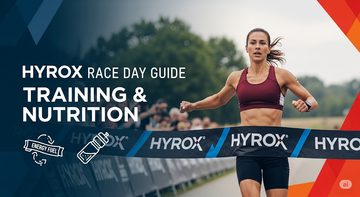Wonder why you can’t achieve a stunning body? As a matter of fact, you might have failed in training and eating. Read this article and find out how to improve the situation.
Terrible At Eating
Speaking of eating, the most crucial factor to pay attention to is meal frequency. Using a punch of strategies to enhance your calorie-intake is essential. Also, you need to put an end to intermittent fasting.
People tend to eat proportionally to their weights. That's what makes them really bad at eating if they don't do it right. Skinny guys, along with overweight folks, somehow share the same eating misconception, which doesn't live in reality. Fat guys always consider losing 15 pounds to keep fit while the actual pounds should go up to 50. On the other hand, weak and small individuals think they eat a lot while the amount they eat is little in truth.

For a while, intermittent fasting (IF) created a storm of anger. It doesn't seem logical in any way if you go through such a long time avoiding eating but still trying to build muscle mass. I don’t buy that “fasting boosts GH production" because this development cannot make a difference. I saw so many people following IF. They were undeniably lean, with a weight of about 160. That's why even if they get abs, nobody cares. Hence, this diet is not suitable for you in the path of earning muscle mass.
Several studies revealed that meal frequency doesn’t influence losing fat or gaining weight. Trust me. It's a game-changer. I myself have experienced this method and seen massive effectiveness in developing my calorie-intake. My friends surrounding me have taken frequent meals with a significant food amount, too. Although this tactical-nuke knowledge bomb makes you shocked, it’s not so difficult. In fact, you need to know this basic information before taking up building muscle. Many gym-goers cling to research claiming meal frequency isn’t the key factor. They ignore the fact that athletes eat multiple times a day, and lots of legends were found thanks to meal frequency.
However, eating a lot can cause some troubles. It takes time to upgrade your eating habit. I can't force you to shovel in 10,000 calories daily when your calorie-intake is 2,000. It's like setting lifting goals. You push your limit gradually, day by day.
Simple Ways To Eat More Food
Level up your calories by adding a shake. Either after or between every meal, having a shake will help. Moreover, you can receive additional 119 calories by adding a tablespoon of olive oil to every shake. Throwing in three shakes daily will make 357 extra calories.
Using two scoops of protein powder will provide you with 220 calories. Additional to 119 from the olive oil, 339 calories per shake is ready for you. Since drinking is more comfortable than eating, you may take protein shakes between meals if you don't feel like having them after meals. That will be an extra 1,000 calories.
Hence, a big shake daily is adequate. All you need is a blender to make shakes. Add protein powder, some nutrient-rich stuff such as egg whites, peanut butter, bananas, milk, etc., to sip on a delicious shake. Make sure to finish it by the end of the day. If you want to observe and check your “macros,” then just add up what you're putting into it.
At the age of 17, I followed this recipe below to gain weight from 170 pounds to 210 pounds within summer. At the same time, I also tried my best to eat as much as I can during meals every two hours. So, you can get this in each day just like I did:
- 2 cups of milk.
- 3 raw eggs.
- 2 cups of ice cream.
- 2 scoops of protein powder.
- 1 TBSP peanut butter.
- Chocolate syrup.
- 1 banana.
- 2 TBSP syrup.
You’re probably a skinny one who can’t put on weight or fail in building muscle if your response to this recipe is similar to diabetes. Yet, only having an appropriate weight with suitable body fat will keep you from getting diabetes due to sugar intake. Other than that, eating peanut butter and jelly sandwiches three a day is recommended. Have one between meals. It’s convenient to carry them on-the-go.
Terrible At Training Intensity
Be more serious with your fitness program by preparing intensity-extending methods.
I've heard a lot about people seeing me annoyed in the gym. I have to say that I was not displeased. I’m hitting the gym to do a workout, not to make friends. I understand training requires concentration. Your attitude means everything, and you should express it. Your gym-face should show up in the right place.
I still observe my surroundings between sets. Not everyone goes to the gym with the right purpose. To be specific, they are superficial and not having a great time. I don't care about your reason. But as long as building muscle mass is the reason you’ve decided to train, you have to get maximally strong.
Being determined by taking your time in the gym and training your ass off. Sometimes, try not to get distracted because this kind of activity might not seem to appeal much to you. If you're not careful, your gym-face will wear off, leading to bad training.
In the good old days, high-rep work is key to successful leg training. Twenty-rep squats, 50-rep leg presses. Real hard. In spite of quitting, true gymaholics used set-extending techniques such as drop sets, rest/pause, running the rack. They did anything to achieve their target, which brought about metabolism stress - the term they didn’t even know. They just stuck to their plans.
That makes some Internet memes that say more than three reps turn cardio nonsense. Even the hardest of three-rep maximal sets can't be compared with a high-rep all-out set of squats. It's not that a three-rep max set isn't hard, but the two just aren't comparable. Sooner or later, you have to make up your mind if you want to keep moving forwards in your training life, hard training is the only choice.
Almost all of us can get satisfied easily and forget to keep the determination. Therefore, some set intensity-extending techniques should be considered adding to push yourself at each training session:
50% Sets
This technique’s schedule provides you a “built-in" goal even when you're calling it a day. After doing warm-ups, fail the first rest. Then, rest 60 seconds and move to the next one, trying to do at least half the number of reps you got on the first set. For example, if you đi 315 x 10-12 on the first set, do at least 5-6 reps on the second one. This method actually works, especially for pressing and pulling movements.
Goal-Focused Rest/ Pause Sets
Each week, you can take your goal to another level by pushing the total number of reps. Rest or pause training means you practice once round, rest 30 seconds, then do another set, rest 30 seconds, and go to the final round. Here is an instance. If you get 100 pounds for 15 reps on your first set, make it nine reps on your second and five reps on the final one. You can practice it again next week with 29 reps in total.
These are my two favorite intensity-extending techniques because they include goal setting, and you don't have to put a lot of effort. Also, it will be better if you have a noticeable number to reach and improve upon. Your focus and intensity can be strongly developed, too.
Terrible At Exercises You Hate
The most effective way to have successful training is doing exercises you hate.
If you're struggling with improving your workout performance, you should read this. It's time to be honest. Is the reason why you hate training related to squats? Squatting is hard while doing other movements aren't. Aside from squat, repeat training all the things you love and avoid exercises you hate is the other cause. In that case, sit down and make a movement checklist that you’re not into when building mass. Then, get your checklist done from top to bottom by practicing them in the gym.
Terrible At Training Because You Don't Train Enough
Don't be afraid of overtraining, especially when you can't move very much weight. There's no way for a professional gym-goer to overtrain unless he doesn't follow a healthy diet and get enough sleep.
You can find the most well-known training split called the three-on/one-off split. It was famous in the ’80s and ’90s by Lee Haney - an American former IFBB bodybuilder who won Olympia eight times. He has proven that training frequency plays an important role in hypertrophy. So instead of training your chest once a week with a 185-pound max bench, you'd better do it at least twice a week.
The No-Suck Training Program
There’s a sole rule to follow for the first three days of this program: do the exercises you dislike. The more you hate, the more you need to finish.
Day 1 - Chest/Shoulders/Triceps
A. Chest Pressing Movement Using the 50% method
B. Chest Isolation Movement Using the rest/pause method
C. Shoulder Pressing Movement 50% method
D. Shoulder Isolation Movement Rest/pause method
E. Triceps Movement (compound variation) 50% method
F. Triceps Movement (isolation variation) Rest/pause method
Note: Examples of compound triceps movements include dips and close-grip bench presses, while examples of triceps isolation movements include kickbacks and cable extensions.
Day 2 - Back/Biceps
A. Vertical Pulling Movement 50% method
B. Another Vertical Pulling Movement Rest/pause method
C. Horizontal Pulling Movement 50% method
D. Another Horizontal Pulling Movement Rest/pause method
E. 2 Biceps Movements (pretty much all curl variations) 1 using the 50% method, 1 using the rest/pause method
Day 3 - Quads, Hamstrings, Calves
A. Quad Isolation Movement Rest/pause method
B. Quad Compound Movement 50% method
C. Hamstring Isolation Movement Rest/pause method
D. Hamstring Compound Movement 50% method
E. 2 Calf Movements 2 sets of 20 for each movement. Straight sets, no intensity methods added.
Day 4 - Off
Repeat the same program over the next three days with the movements you want to do, and intensity methods added.
Day 5 - Chest/Shoulders/Triceps
A. Chest Pressing Movement 50% method
B. Chest Isolation Movement Rest/pause method
C. Shoulder Pressing Movement Using the 50% method
D. Shoulder Isolation Movement Rest/pause method
E. Triceps Movement (compound variation) 50% method
F. Triceps Movement (isolation variation) Rest/pause method
Day 6 - Back/Biceps
A. Vertical Pulling Movement 50% method
B. Another Vertical Pulling Movement Rest/pause method
C. Horizontal Pulling Movement 50% method
D. Another Horizontal Pulling Movement Rest/pause method
E. 2 Biceps Movements 1 using the 50% method, 1 using the rest/pause method
Day 7 - Quads, Hamstrings, Calves
A. Quad Isolation Movement Rest/pause method
B. Quad Compound Movement 50% method
C. Hamstring Isolation Movement Rest/pause method
D. Hamstring Compound Movement 50% method
E. 2 Calf Movements of your choice two sets of 20 for each movement. Straight sets, no intensity methods.
Day 8 - Off
Day 9 - Repeat
Practice Isolation Exercises Before Compound
Of course, to active muscle in particular body parts. Lots of people perform quad or hamstring compound exercises so poorly that they're lagging in one or both of these areas. However, in leg training, doing isolation movements for muscle activation in those areas will raise the greater chance of activating powerfully in the compound movements that follow.
Built-In Focus
Last but not least is the built-in included in this program. Every week, you need to be ready to beat your own last week's record in the previous session. Thus, getting your head in the game is necessary. Or else, you'll forever get stuck in a rut.
Related Articles:
- What Are Macronutrients? Nutrition Knowledge You Should Know
- 6 Must Ask Questions About Fat Burning Supplement
- 7 Best Ab Exercises For A Six Pack - Ultimate Sup










